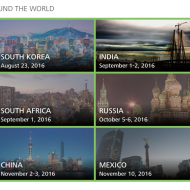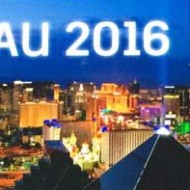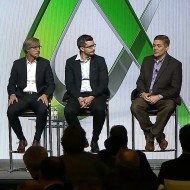It seems appropriate that Penn and Teller opened this year’s keynote address with a magic trick (making Autodesk’s Jonathan Knowles’ glasses appear inside a box on top of Teller’s head), because what followed was truly magical.
This year’s theme, The Answer Is Outside, dazzled attendees with new perspectives, innovations, and technologies.
Jeff Kowalski, Autodesk CTO, set the stage by saying that illiterates will not be those who can’t read and write, but those who cannot learn, unlearn, and relearn. Our mindsets are just as important as our toolsets. It’s time to start looking outside.
Time to change our mindset
We need to start looking outside for the tools, people, work, and sources of insight.
Tools
- Address projects whose scope used to be too massive, such as an entire highway corridor.
- Explore different design options quickly.
- Find out what’s already out there and only design new things.
- Scan reality into a computer for richer or more accurate models.
- Access the tools when we need them rather than buying them.
People
- “Most of the smartest people work for someone else” so let’s bring them in from outside.
- Crowdsourcing, open innovation, and co-creation let us find the best people to collaborate with on projects when we need them as long as we need them.
Work
- AU is the perfect place to look outside the work you do.
- Take classes and talk to people outside of your field.
- Companies can hire companies that not only design and manage projects, but bring financing as well.
Insight
- Step outside your current perspective.
- Generational differences are only 6 years apart now. Take advantage of reverse mentoring where younger people help their more experienced peers.
- Reverse innovation: If what you designed is too expensive and complicated for the developing world, reimagine it. GE found that their less expensive product sold well in the U.S.
Doing things differently
So, who’s doing this now? Carl Bass, Autodesk CEO and President, shared how Autodesk’s customers are doing things differently to create technologies and processes that are magical. Here’s just a few:
Orphanage Guitars is using Autodesk® Fusion 360™ to create custom guitars. They saw an opportunity to combine that technology with digital manufacturing to pursue two of their passions: mass customization and electric guitars.
Aston Martin is using Autodesk® Alias® Automotive to reinvent how they bring cars to market. Starting with Autodesk® SketchBook® Pro to Alias to a clay model (costing 1/2 million each!). When done, they laser scan it back into Alias. Using this method they were able to get their 2014 Vanquish automobile to market in record time.
Porex Corporation makes more than 30 million plastic components everyday that vent, filter, or wick. Using Autodesk® PLM 360, which took them just 4 months to implement (compared to the 18 months or more it usually takes to implement traditional PLM systems), they were able to reduce their time searching for data and component information from hours to just seconds, and shorten the time it took to build a report on performance metrics from 3 hours to 45 seconds.
Bill Spracher, the lead designer and engineer at AMP’D Gear and Jeff Tiedekin, a master fabricator and hydraulics designer at Monkey Likes Shiny designed a customized prosthetic leg for Katherine Crawford. who was injured during live fire training with the 101st Airborne and ended up losing her lower leg. Katherine is an avid nature photographer and spends a lot of time outdoors, so she needed a custom prosthetic leg that would work in a variety of outdoor conditions. They had to do the project quickly and cheaply because they were on a 4-week schedule and a tight budget.
They used Autodesk® 360 as their collaboration tool so that Jeff could keep up with Bill’s work as it evolved. When they needed to get Katherine’s input, she could easily connect to the project and automatically view the design using the Autodesk 360 Mobile App on her iPad. They used Autodesk® CAM 360, Autodesk’s newest CAM tool, and the world’s first and only cloud-based CAM platform with a much more streamlined workflow than traditional CAM packages to manufacture the product.
Bot & Dolly’s new Autodesk® Maya®-based workflow is a breakthrough innovation in a couple of ways. They put a camera on the end of an industrial robot arm, and animate the robots in real life the way people animate movies character. It gave them complete control of the robots motion in ti
me and space. That’s how they shot the breakthrough film Gravity. Best of all, since none of the humans could make it, they sent IRIS, to show us her moves.
BTW, Penn and Teller will be back at this year’s closing session along with some other surprises. The session will be live-streamed from AU on Thursday evening at 4:30 p.m, Pacific time. Don’t miss it.
–sandy



